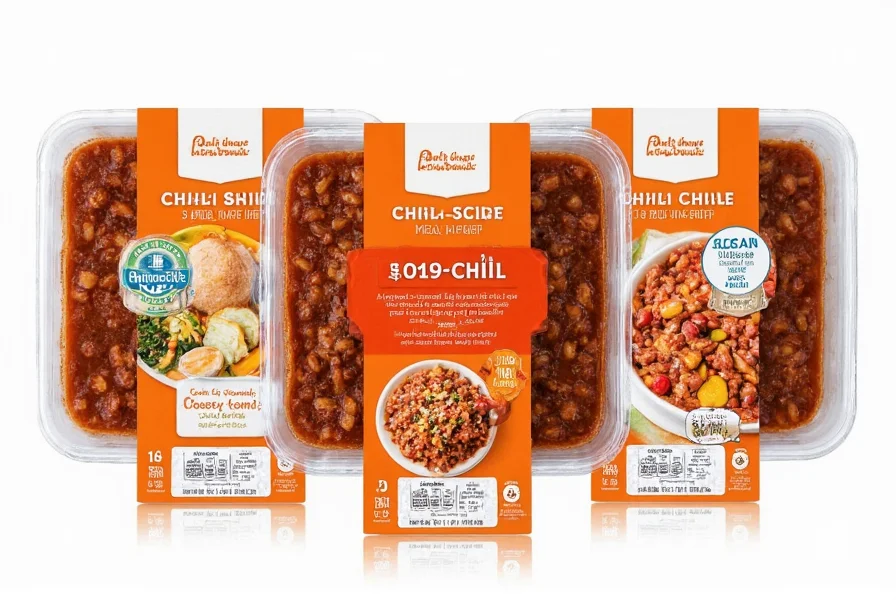Understanding Budget-Friendly Chili Preparation
Creating delicious chili on a tight budget doesn't mean sacrificing flavor or nutrition. The most economical chili recipes focus on maximizing value from affordable ingredients while minimizing waste. Budget Bytes, a popular recipe resource, demonstrates how thoughtful planning transforms basic pantry items into satisfying meals that feed families without straining finances.
Cost Breakdown of Essential Chili Ingredients
| Ingredient | Standard Cost | Budget Alternative | Savings Per Serving |
|---|---|---|---|
| Ground beef (1 lb) | $5.50 | Textured vegetable protein | $2.75 |
| Canned tomatoes (28oz) | $1.75 | Store brand equivalent | $0.50 |
| Beans (15oz can) | $1.25 | Dried beans (cooked) | $0.75 |
| Total per serving (4 servings) | $2.15 | Optimized budget version | $1.35 |
Step-by-Step Budget Chili Recipe
Follow this proven method for creating restaurant-quality chili that costs less than fast food. This affordable chili recipe for families serves four people with minimal equipment required.
- Prep dried beans (soak overnight or use quick-soak method) - saves 40% versus canned
- Sauté onions and garlic in minimal oil until translucent
- Add budget protein source - consider textured vegetable protein, ground turkey, or extra beans
- Incorporate tomatoes and spices - use store-brand canned tomatoes and build flavor with cumin, chili powder, and oregano
- Simmer for 30-60 minutes to develop flavors and thicken consistency
- Finish with budget-friendly toppings like shredded cheese from bulk blocks or homemade sour cream

Smart Substitutions for Cost-Effective Chili
Master these cost-effective bean chili preparation techniques to stretch your grocery dollars further without compromising taste:
- Protein alternatives: Replace half the meat with TVP (textured vegetable protein) or additional beans
- Spice blending: Create your own chili seasoning mix from individual spices rather than buying pre-made packets
- Batch cooking: Prepare double or triple batches and freeze portions for future meals
- Seasonal produce: Incorporate inexpensive seasonal vegetables like bell peppers when they're on sale
- Acid balance: Use vinegar instead of expensive lime juice to brighten flavors at the end
Nutritional Value and Serving Suggestions
This economical vegetarian chili option delivers impressive nutrition per dollar spent. A single serving provides approximately 350 calories, 18g protein, and 12g fiber. Serve with inexpensive sides like cornbread made from scratch or rice to create a complete, satisfying meal.
For meal prep enthusiasts, this budget-friendly slow cooker chili adapts perfectly to set-it-and-forget-it cooking. Simply brown your protein (if using), add all ingredients to the slow cooker, and cook on low for 6-8 hours. The extended cooking time develops deeper flavors while requiring minimal active preparation time.

Storage and Reheating Techniques
Proper storage maximizes the value of your cheap ingredients for homemade chili. Cool completely before transferring to airtight containers. Refrigerated chili stays fresh for 4-5 days, while frozen portions maintain quality for 3-4 months.
When reheating, add a splash of water or broth to restore optimal consistency. For frozen portions, thaw overnight in the refrigerator before reheating on the stovetop or in the microwave. These practices ensure your meal prep chili on a budget remains delicious throughout the week.
Variations for Different Dietary Needs
Adapt this budget-friendly base recipe to accommodate various preferences without significant cost increases:
- Vegetarian version: Omit meat entirely and boost protein with extra beans and TVP
- Gluten-free option: Naturally gluten-free when using pure spices and checking labels on canned goods
- Spice level control: Adjust heat with inexpensive cayenne pepper rather than specialty hot sauces
- Bean variety: Rotate between pinto, kidney, and black beans based on weekly sales
Frequently Asked Questions
How can I make chili cheaper without losing flavor?
Maximize flavor while minimizing costs by using dried beans instead of canned, incorporating textured vegetable protein as a partial meat substitute, building depth with inexpensive spices rather than expensive ingredients, and using store-brand canned tomatoes. The key is proper spice blooming and extended simmering time to develop complex flavors from basic ingredients.
What's the most budget-friendly protein for chili?
Dried beans and textured vegetable protein (TVP) represent the most economical protein sources for chili. Dried beans cost approximately 30-40% less than canned varieties when prepared at home. TVP, available in bulk, costs about $1.50 per pound dry and expands to 4 pounds when rehydrated, making it significantly cheaper than ground meat while providing comparable protein content.
How long does homemade budget chili last in the refrigerator?
Properly stored in an airtight container, homemade chili maintains freshness for 4-5 days in the refrigerator. For longer storage, freeze portions in labeled containers for 3-4 months. Always cool chili completely before refrigerating or freezing to maintain quality and food safety. Reheat thoroughly to 165°F (74°C) before serving.
Can I make good chili without expensive spices?
Absolutely. Create your own chili seasoning blend using basic pantry spices: 2 tablespoons paprika, 1 tablespoon cumin, 2 teaspoons garlic powder, 1 teaspoon oregano, 1 teaspoon salt, and ½ teaspoon black pepper. This homemade mix costs approximately 15 cents per batch compared to $1.50-$2.00 for commercial seasoning packets, with superior flavor control and no unnecessary additives.











 浙公网安备
33010002000092号
浙公网安备
33010002000092号 浙B2-20120091-4
浙B2-20120091-4